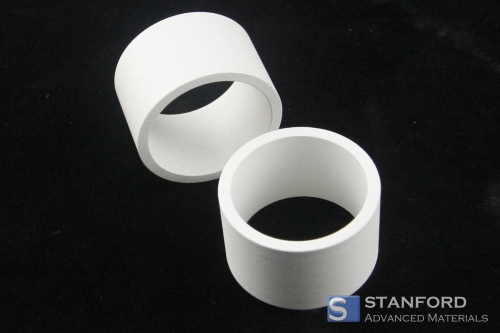The Four Major Applications of Magnesium Alloys
Magnesium, celebrated as one of the lightest structural metals, exhibits superior qualities, including higher specific strength, specific stiffness, and excellent damping capabilities. Its easy recyclability adds to its allure. When amalgamated with other elements, magnesium forms alloys renowned for their small density, elevated strength, substantial elastic modulus, superior shock absorbency, higher impact load capacity compared to aluminum alloys, and robust corrosion resistance to organic matter and alkali. The broad spectrum of applications for magnesium alloys can be classified into four major domains.

1. Transportation Revolution
In the face of the global energy crisis and escalating environmental concerns, the quest for energy efficiency and lightweight structures has become paramount in the automotive industry. Magnesium alloy finds a pivotal role in this revolution, influencing components such as motorcycle engines, wheel hubs, reducers, rear handrails, and damping systems. The integration of magnesium alloy components not only reduces the overall weight of vehicles but also enhances acceleration, braking performance, and fuel efficiency. Furthermore, it mitigates vibrations, pollutants, and noise, contributing to an elevated level of comfort in transportation.
The automotive sector's shift towards sustainability and eco-friendly practices sees magnesium alloys as essential components in the development of lightweight and fuel-efficient vehicles. This shift aligns with the urgent need for reduced carbon emissions and increased energy efficiency in the transportation industry. Magnesium alloy's specific strength and stiffness make it a preferred choice for critical components, contributing to advancements in electric and hybrid vehicles.
2. Electronic Marvels
The electronics industry witnesses the prowess of magnesium alloy, leveraging its exceptional properties of thin-wall casting, commendable ratio of strength to stiffness, and remarkable anti-collision capabilities.
These attributes align seamlessly with the demands of high integration, lightweight design, miniaturization, anti-collision strength, electromagnetic shielding, efficient heat dissipation, and environmental sustainability—hallmarks of modern 3C products. Magnesium alloy plays a significant role in shaping the shells and components of 3C devices like mobile phones, notebook computers, digital cameras, cameras, and PDAs, contributing to a surge in the development and application of magnesium alloys in the electronics realm.
The ever-evolving landscape of consumer electronics demands materials that not only provide structural integrity but also cater to the need for compact, lightweight designs. Magnesium alloys address these requirements, enabling the development of sleek and portable electronic devices. The thin-wall casting capabilities of magnesium alloys facilitate intricate designs and contribute to the miniaturization trend observed in the electronics industry. As consumers seek lighter and more durable gadgets, magnesium alloys emerge as key enablers of innovation in this sector.
3. Skyward Bound: Aerospace Advancements
In the aerospace industry, where structural weight reduction and the integration of bearing and functionality are paramount, magnesium alloys emerge as vital contributors. These alloys find applications in various components of civil and military aircraft, including engines, propellers, gearboxes, support structures, and elements for rockets, missiles, and satellites. As the aerospace sector evolves, magnesium alloys play a crucial role in advancing aircraft structure materials towards lighter, more efficient solutions.
The quest for fuel efficiency and enhanced performance in the aerospace sector propels the adoption of magnesium alloys. These alloys contribute to reducing the overall weight of aircraft, improving fuel efficiency, and increasing payload capacity. The structural integrity and high specific strength of magnesium alloys make them indispensable for critical components in aircraft design. The aerospace industry's reliance on magnesium alloys underscores their pivotal role in pushing the boundaries of technological innovation for both civil and military applications.

4. Guardians of Corrosion: Chemical Field Applications
Magnesium alloys, particularly in the form of sacrificial anodes, stand as effective guardians against metal corrosion. Widely utilized in domestic and industrial settings, these sacrificial anodes protect structures like water heaters, underground iron pipes, cables, oil tanks, water distillers, ship hulls, and steel piles in marine environments. This application underscores the adaptability of magnesium alloys in safeguarding critical infrastructure from the corrosive forces of various environments.
The chemical industry benefits from the corrosion-resistant properties of magnesium alloys, especially in marine and corrosive environments. Sacrificial anodes made from magnesium alloys provide a cost-effective solution to prevent the corrosion of metal structures submerged in water or exposed to harsh chemical conditions. This application extends the lifespan of infrastructure and reduces maintenance costs, making magnesium alloys a preferred choice for corrosion protection in diverse chemical fields.
In essence, the diverse applications of magnesium alloys underscore their adaptability and pivotal role across industries. From revolutionizing transportation and enhancing electronic devices to contributing to aerospace advancements and safeguarding against corrosion, magnesium alloys emerge as versatile materials, shaping the trajectory of technological progress and ensuring sustainability across a broad spectrum of applications.









